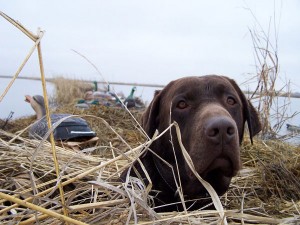
Winter storm Cleon ignites migration activity.
As arctic air pushes across the Great Plains into the Mississippi and Ohio Valleys, waterfowl activity is expected to increase significantly and reach peak migration levels throughout the Central and Mississippi Flyways throughout the week. The near-record number of mallards resting along the Missouri River corridor in South Dakota are already on the move. Reports throughout the Central Flyway confirmed heavy migration activity in Nebraska, Oklahoma, Kansas and the Texas Panhandle.
As arctic temperatures move east, the abundance of waterfowl along the Illinois River are expected to move further south over the next few days as ice builds in the northern third of the nation. In short, winter storm Cleon has ignited some of the best migration activity of the season.
Hello folks, and, as always, welcome to Waterfowler.com.
The 2013-2014 waterfowl season appears to be unfolding much as it did last season in the eastern half of the nation. Early season cold fronts managed to move ducks out of Canada and concentrate them along the major river corridors in both the Central and Mississippi Flyways.
While cold temperatures and ice has been present in the northern tier for the past few weeks, open rivers and an abundance of food sources have kept over three-quarters of a million mallards along the Missouri River in South Dakota, and nearly an equal number of various puddle ducks along the Mississippi and Illinois Rivers.
Drought conditions continue to impact migration activity and hunter success in the Pacific Flyway and, thanks to the consistency of timing in the diver migration, hunting across the Great Lakes and northern potions of the eastern seaboard have been steady as puddle duck numbers fluctuate.
As duck seasons have begun to close in the north, the hardcore goose hunter has traded their waders for insulated bids and taken to the field. With the snow accumulation limited to the far north at this time, goose hunting is expected to continue across the northern tier until significant snow pack arrives.
Waterfowler.com would like to thank our readers for their continued participation in our free hunting reports. WFC hunting reports can include images from your computer or mobile device, so be sure to upload and share them with your fellow members.
PACIFIC FLYWAY
Drought continues to impact duck hunting success throughout the central and southern portions of the flyway. Duck and Goose numbers in The northern third of the flyway are average for this time of year, with near peak activity in Idaho and western Montana. Hunter success in the Sacrament Valley is varied, with mallard, pintail and spec’ numbers good to excellent. Ice continues to build in Utah and hunter success has increased slightly in the southern portion of the flyway as fresh birds arrive from the north.
CENTRAL FLYWAY:
Winter storm Cleon has kicked the migration into high gear. Over three-quarters of a million mallards that have been congregating is South Dakota the past few weeks are expected to move south in force over the next few days if sub-zero temperatures remain on the Great Plains. Hunter success in Nebraska, Oklahoma, and Kansas is expected to increase significantly over the next few days. Goose numbers are also expected to increase throughout the southern portion of the flyway as arctic temperatures dip south.
MISSISSIPPI FLYWAY:
Goose hunting has remained good to excellent in the northern third of the flyway. Mallards and late migrating divers that remain well to the north on the Mississippi River are expected to move south as the hard freeze hits the remaining open water. As temperatures plummet from winter storm Cleon, ducks along the Illinois and Ohio River Valleys are expected to push further south and give southern states a fresh round of hardy northern birds.
ATLANTIC FLYWAY:
Diver and sea ducks number remain good to excellent in northern coastal areas. Both light and dark goose numbers increased significantly over the holiday weekend in Eastern Pennsylvania and Delaware. Duck hunting on the Chesapeake bay remains average for this time of year with diver numbers fair to good at this time. Ringed-neck ducks continue to stack in the southern portion of the flyway along with other early migrators.





